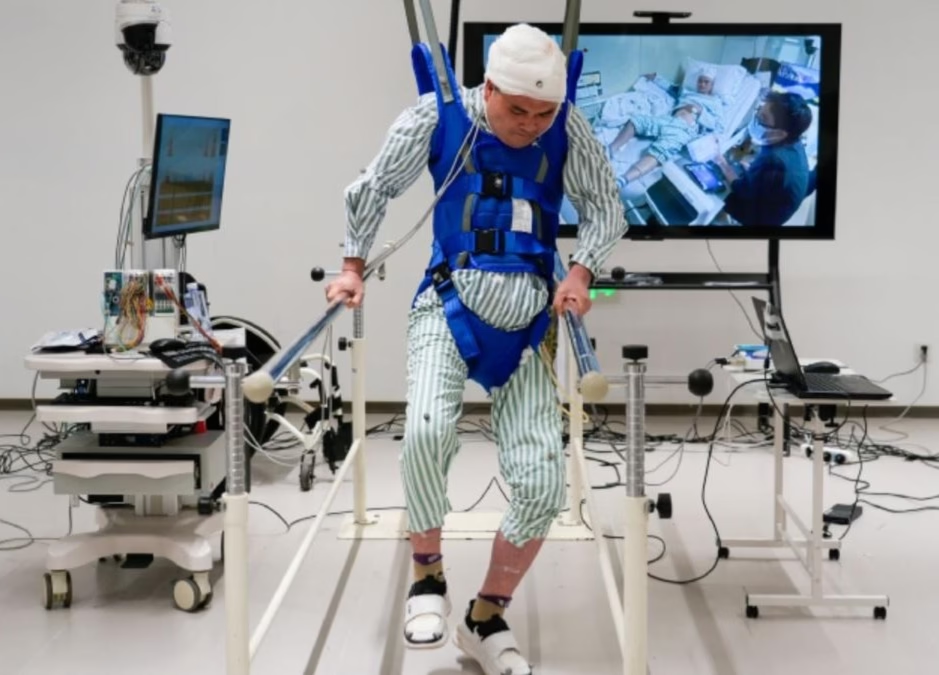Fez – For decades, paralysis from spinal cord injuries seemed like a life sentence.
Even with advanced brain-computer interfaces (BCIs) like Elon Musk’s Neuralink, the general belief was that once nerve pathways were damaged, they were gone for good.
But a revolutionary clinical trial in China just changed everything.
Scientists at Shanghai’s Fudan University have pulled off something incredible: four paralyzed patients regain movement in their legs just hours after a minimally invasive surgery.
The secret? A brain-spinal implant that restores lost nerve communication.
And we’re not talking about slow, gradual progress, within 24 hours, they could move their legs.
In just weeks, they were walking independently. Some even reported regaining nerve sensations they thought were lost forever.
How this tech works
Traditional BCIs usually rely on external computers to assist movement.
But Fudan University’s brain-spinal interface skips the middleman, it directly reactivates dormant nerves through a process called neural remodeling.
This means the nervous system can actually rewire itself, reducing or even eliminating the need for permanent assistive devices.
The lead researcher, Jia Fumin, described it as a game-changer:
“For years, high-end neurotechnology came from other countries. Now, we’ve entered completely uncharted territory with the world’s first original brain-spinal interface system.”
So, how does it work? The procedure involves implanting two tiny electrode chips, each just 1mm wide into the motor cortex of the brain.
These chips decode neural signals and send targeted electrical stimulation to the spinal nerve roots.
Essentially, the brain and the paralyzed muscles start talking again.
The first patient, a 34-year-old man who lost movement in his legs after a fall, had the surgery on January 8.
By the next day, he lifted both legs. Two weeks later, he was stepping over obstacles and walking over 16 feet (five meters) using a standing frame.
Three more patients underwent the procedure in February and March all with remarkable recovery timelines.
Neural remodeling research in Switzerland had shown similar success, but patients needed six months to see movement.
The Chinese team slashed that to two weeks. Their technique also minimizes surgical damage, making recovery even smoother.
By late February, the first patient had a follow-up visit and his progress was astonishing.
“My feet feel warm and sweaty, and there’s a tingling sensation. When I stand, I feel my leg muscles contracting,” he said.
He even regained bladder control, a major sign of deep nerve restoration.
All medical devices used in these surgeries were developed in China, marking a huge leap forward in the country’s neurotechnology industry.
With 3.74 million spinal cord injury patients in China and 90,000 new cases every year, this breakthrough could change millions of lives.
Jia believes the future is even brighter:
“If we implant a spinal interface and combine it with 3-5 years of rehab, the patient’s nerves could fully reconnect. One day, they might not even need assistive devices at all.”
A cure for paralysis might not be as far off as we once thought.
















